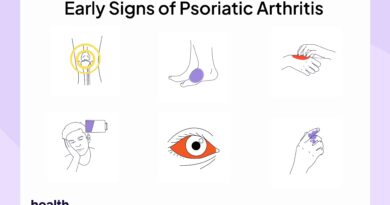Atrophic Vaginitis (Vaginal Atrophy): Causes, Treatment

Atrophic vaginitis, also known as vaginal atrophy, is when the tissues of the vaginal canal become thinner, often leading to dryness and inflammation. The condition occurs most commonly in people experiencing perimenopause or menopause due to the drop in estrogen that happens during menopause.
Research has found that about 15% of people with vaginas experience vaginal atrophy before menopause, but 40-57% of people experience the condition after menopause.
Vaginal atrophy can cause sexual pain and discomfort, itchiness, and burning. It can also lead to complications like bladder and bacterial infections. There are several treatment options to reduce symptoms of the condition, such as vaginal moisturizers and hormonal treatments.
The symptoms of vaginal atrophy involve changes in the vagina, which then lead to other symptoms throughout the vaginal area, pelvic area, and within the urinary system.
Vaginal Changes
If you are experiencing vaginal atrophy, you may experience changes in your vagina and vaginal area, such as:
- Thinning vaginal tissue
- Less vaginal lubrication
- A shortened or narrowed vaginal canal
- Vaginal prolapse (where the vagina sinks lower in the pelvis due to weakened pelvic muscles)
Related Vaginal Symptoms
As a result of these changes to your vaginal tissues, you may experience symptoms like:
- Vaginal dryness
- Burning
- Itching
- Pain during or after sex
- Decreased lubrication during sex
- Bleeding
- Spotting
Urinary Symptoms
Vaginal atrophy can affect urination, causing symptoms like:
- Burning during peeing
- A frequent feeling of needing to pee
- An urgency to pee
- Difficulty controlling the flow of your urine
Vaginal atrophy is caused by a drop in estrogen, which typically occurs in people who are going through or have completed menopause. Menopause, which is when you stop having menstrual periods, causes a 95% drop in estrogen production.
Estrogen is responsible for maintaining vaginal physiology, including tissue strength, suppleness, and blood flow to the vagina. As estrogen drops, the vaginal walls become thinner, and vaginal lubrication decreases.
Although vaginal atrophy happens most widely in people of menopausal age (around age 45-55), it can occur in people who have experienced early menopause, gone through cancer treatment, or had their ovaries removed.
Other risk factors for vaginal atrophy include primary ovarian insufficiency (when the ovaries start to fail before age 40), ovarian failure, pituitary or thyroid disorders, and anti-estrogen medications. After childbirth and during breastfeeding, there is also a steep drop in estrogen, which can cause symptoms of vaginal atrophy or dryness for some people.
If you suspect you may be experiencing vaginal atrophy, you should visit a healthcare provider like an OB-GYN (a medical doctor specializing in female reproductive health and pregnancy) for an examination. These providers can typically diagnose the condition during a pelvic examination.
During a pelvic exam, the OB-GYN will place an instrument called a speculum inside your vagina to slightly widen your vaginal walls, allowing them to examine your vagina and cervix.
If your provider notices signs of atrophy, such as thinning vaginal walls, dryness, a pale color, and inflammation, they may diagnose you with vaginal atrophy. This pelvic examination, along with your age, menopausal status, and symptoms, is usually enough information to diagnose the condition.
In some cases, your provider may need to rule out any other conditions that may be causing your symptoms. For example, they may test for sexually transmitted infections (STIs), urinary tract infection, and bacterial infections before giving a diagnosis.
There are several different effective treatments for vaginal atrophy and its symptoms. However, up to 70% of people with vaginal atrophy don’t seek medical care or treatment for their symptoms. This is often due to feelings of embarrassment or cultural, societal, or religious beliefs. In some cases, people don’t know that treatments are available.
Treatments to manage your vaginal atrophy symptoms include:
- Vaginal lubricants: These over-the-counter (OTC) products decrease dryness and can help make sex less painful and more comfortable.
- Local estrogen therapy: Apply vaginal creams, vaginal rings, or suppositories (vaginal tablets) containing low doses of estrogen directly to the vaginal tissue, helping to restore strength and decrease dryness.
- Systemic estrogen therapy: A type of hormone replacement therapy (HRT), systemic estrogen therapy uses pills, patches, gels, or sprays to release estrogen into the bloodstream. In the case of vaginal atrophy, the body will use the additional estrogen to strengthen the vaginal lining.
- Selective estrogen receptor modulators (SERMs): These medications work by stimulating specific tissues (such as vaginal tissues) to respond to estrogen.
You can’t prevent vaginal atrophy. It’s a normal and common part of aging for people with vaginas. However, you can take steps to lessen symptoms, prevent from getting worse, and decrease the chances of complications. Promptly treating any serious symptoms of vaginal atrophy—like bleeding, painful sex, and bladder infections—can significantly improve quality of life.
One way you can reduce or manage symptoms is by using over-the-counter (OTC) vaginal moisturizers and lubricants. You can apply lubricants inside the vagina and in the vulva areas—just make sure to choose an internal moisturizer for use inside the vagina.
Water-based or silicone-based lubricants work best for most people. Some experts recommend avoiding oil-based lubricants as they may cause skin irritation and break down condoms. Using a lubricant regularly will decrease dryness, inflammation, vaginal tearing, and bleeding.
If lubricants aren’t effective enough, hormonal treatments, such as vaginal estrogen creams or hormone replacement therapy, can also reduce your symptoms and prevent them from worsening.
If you start to experience new or worsened vaginal atrophy symptoms, talk to your healthcare provider right away. They can help you prevent discomfort and complications.
Typically, vaginal atrophy only causes symptoms related to the vagina, such as dryness, pain during intercourse, itchiness, burning, and inflammation. However, these symptoms may impact other organs or parts of the body or lead to various infections.
For instance, vaginal atrophy can lead to:
- Changes in vaginal pH (acidity), which can make people more prone to yeast infections and bacterial infections
- An increased risk for urinary tract infections (UTIs)
- An increased risk for recurrent yeast, bacterial, and urinary tract infections
Most people experience some amount of vaginal atrophy by the time they reach menopause and sometimes before. It’s a normal part of aging for most people with vaginas. Some people may have little to no symptoms, while others experience noticeable discomfort or pain.
If you experience symptoms that affect your comfort, sexual experiences, or quality of life, talk to a healthcare provider like an OB-GYN. They can discuss the treatment options available to manage your symptoms and decrease discomfort.





